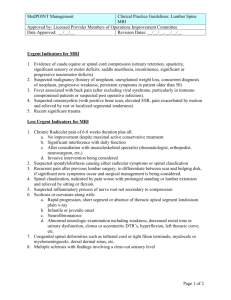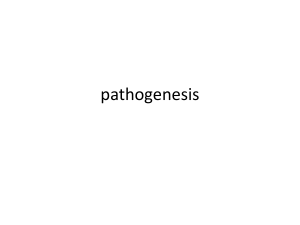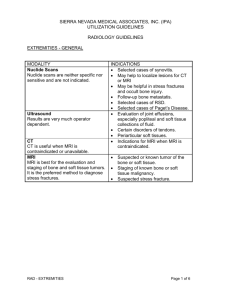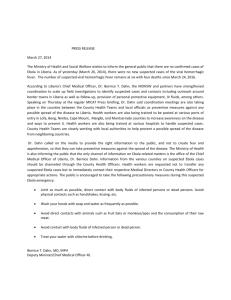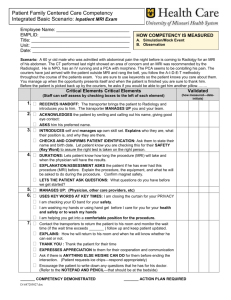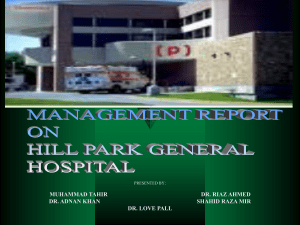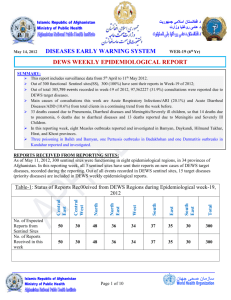HEAD and brain
advertisement
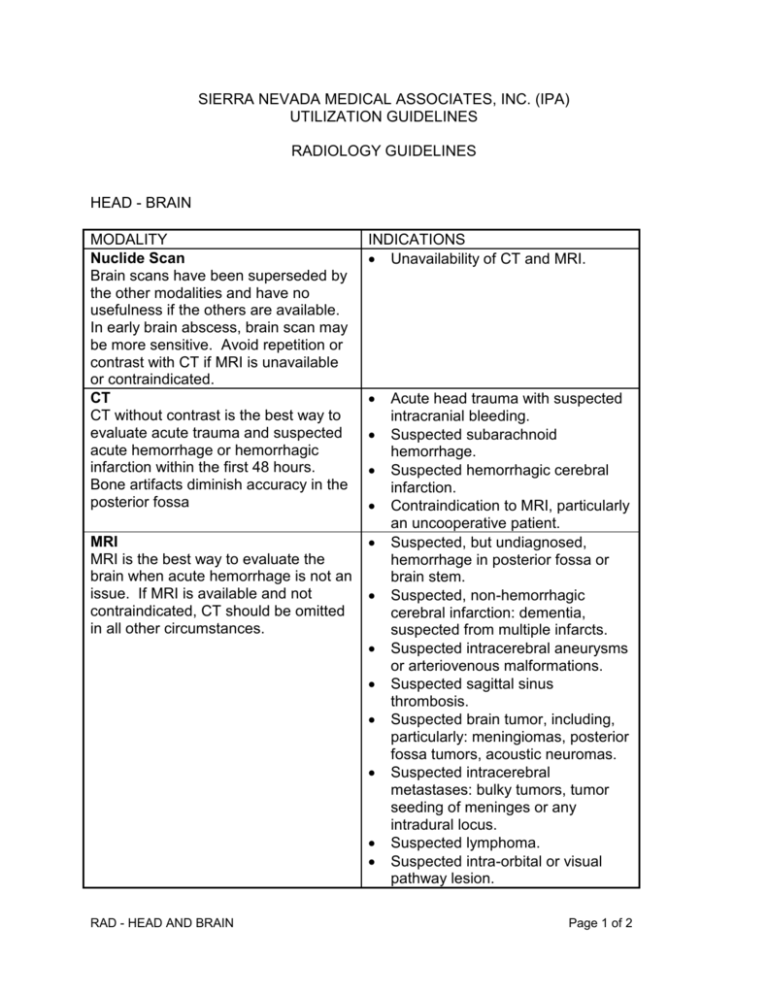
SIERRA NEVADA MEDICAL ASSOCIATES, INC. (IPA) UTILIZATION GUIDELINES RADIOLOGY GUIDELINES HEAD - BRAIN MODALITY Nuclide Scan Brain scans have been superseded by the other modalities and have no usefulness if the others are available. In early brain abscess, brain scan may be more sensitive. Avoid repetition or contrast with CT if MRI is unavailable or contraindicated. CT CT without contrast is the best way to evaluate acute trauma and suspected acute hemorrhage or hemorrhagic infarction within the first 48 hours. Bone artifacts diminish accuracy in the posterior fossa INDICATIONS Unavailability of CT and MRI. MRI MRI is the best way to evaluate the brain when acute hemorrhage is not an issue. If MRI is available and not contraindicated, CT should be omitted in all other circumstances. RAD - HEAD AND BRAIN Acute head trauma with suspected intracranial bleeding. Suspected subarachnoid hemorrhage. Suspected hemorrhagic cerebral infarction. Contraindication to MRI, particularly an uncooperative patient. Suspected, but undiagnosed, hemorrhage in posterior fossa or brain stem. Suspected, non-hemorrhagic cerebral infarction: dementia, suspected from multiple infarcts. Suspected intracerebral aneurysms or arteriovenous malformations. Suspected sagittal sinus thrombosis. Suspected brain tumor, including, particularly: meningiomas, posterior fossa tumors, acoustic neuromas. Suspected intracerebral metastases: bulky tumors, tumor seeding of meninges or any intradural locus. Suspected lymphoma. Suspected intra-orbital or visual pathway lesion. Page 1 of 2 RAD - HEAD AND BRAIN Suspected pituitary tumor or lesion. Suspected intracranial infections such as cerebritis, meningitis, when lumbar puncture is not diagnostic, particularly: brain abscess, toxoplasmosis. Suspected multiple sclerosis. (MRI of the brain is the first choice over MRI of the spine, or evoked responses.) NON-INDICATIONS: Headaches Tension headaches Migraine. Cluster headaches. Dizziness Vertigo MRI and CT not approved unless unique indications exist. Specific indications need to be identified. Page 2 of 2
